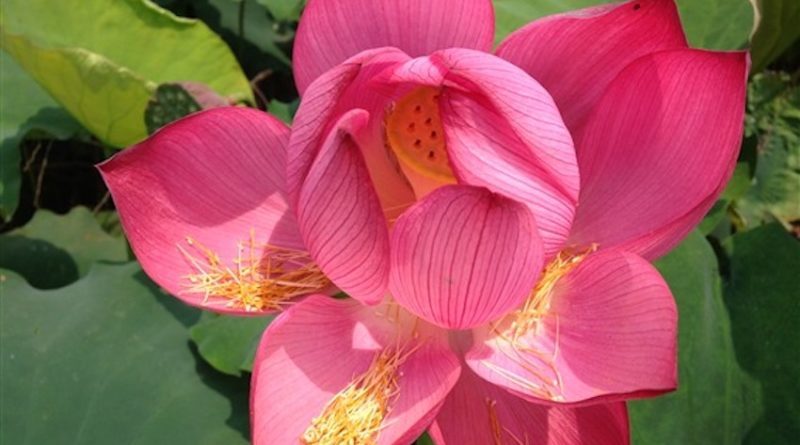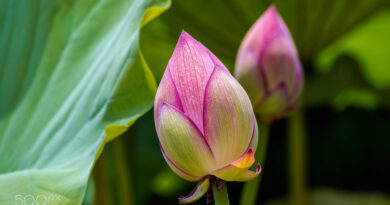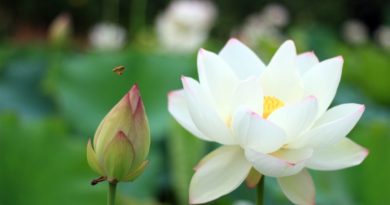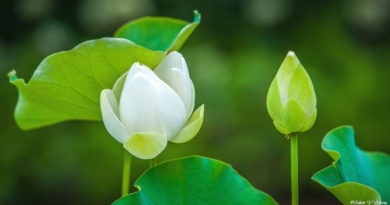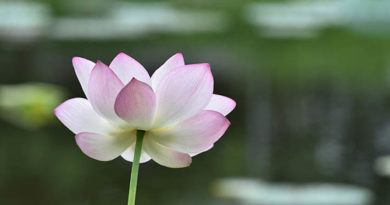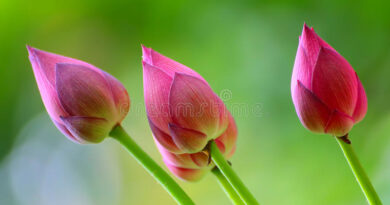THE MEANING OF SANGHA
THE MEANING OF SANGHA
Like the young teenagers who delight in doing things differently from their parents, new Buddhists in non-Asian countries seem to be going through their own proud adolescence by challenging the boundaries of traditional Buddhism. Fortunately, for both our youngsters and Western Buddhists, the arrogance of youth soon gives way to the mature, long years of understanding and respect for tradition. It is in order to hasten this growing up of Buddhism in Australia that I write this article on the meaning of ‘Sangha’ as it was meant to be understood by the Lord Buddha.
In the Tipitika, the recorded Teachings of the Lord Buddha, one finds two main focusses for the meaning of Sangha: the third part of the Threefold Refuge (in the Buddha, Dhamma and Sangha) and the third factor of the to-be -worshipped Triple Gem (The Buddha, Dhamma and Savaka Sangha). On odd occasions in the Tipitika, ‘Sangha’ is used to denote a ‘herd’ of animals (Patika Sutta, Digha Nikaya) or ‘flock” of birds (Jataka Nidana), but groups of lay disciples, both men and women, are always described as ‘parisa’, an assembly.
So what is the meaning of Sangha in the first main context, in the Threefold Refuge? Certainly, only an exceedingly eccentric Buddhist would take as their third refuge a sangha of birds (only “one gone cuckoo”, as they say!). In fact, the Tipitika is precise in what is meant by the third refuge. In the Canon, on every occasion that an inspired person took the Threefold Refuge as an expression of their faith, it was either in the Buddha, Dhamma and Bhikkhu Sangha, or in the Buddha, Dhamma and Bhikkhuni Sangha. Thus, in original Buddhism, the meaning of Sangha in the context of the Threefold Refuge is unarguably the Monastic Sangha.
The Sangha as the third factor of the Triple Gem worshipped by Buddhists seems to have a different meaning. It is called the Savaka Sangha (or Ariya Sangha) and is defined as those attained to any of the Eight Stages of Enlightenment (the 4 usual stages divided into Path and Fruit) who are “worthy of gifts, hospitality, offerings and reverential salutations, and who are the unsurpassed field of merit in the world”. So, in the original texts, who are the “unsurpassed field of merit and worthy of offerings and salutations”?
In the Dakkhinavibhanga Sutta (Majjhima 142), the Buddha said that, “an offering made to the monastic Sangha is incalculable, immeasurable. And, I say, that in no way does a gift to a person individually ever have a greater fruit than an offering made to the monastic Sangha”. Consistency proves that the Savaka Sangha, the unsurpassed field of merit in the world, must be a part, a subset of the monastic Sangha – there is no greater fruit than an offering to the monastic Sangha.
Furthermore, in the world of the Tipitika, offerings and reverential salutations would always be given by the laity to the monastic and never the other way around. Even the highly attained lay disciple Ugga Gahapati who was a Non-Returner is seen to be giving reverential salutations to ordinary bhikkhus and serving their needs with his own hands (Anguttara Nikaya, Eights, Suttas 21 & 22). Thus, those “worthy of gifts, hospitality, offerings and reverential salutations”, the Savaka Sangha, are again shown to be a part of the monastic Sangha of both genders.
This proves that the meaning of ‘Sangha’ in the context of the to-be-worshipped Triple Gem is that part of the monastic Sangha who have attained to a Stage of Enlightenment. This Savaka Sangha, or Ariya Sangha, is in no way outside of the monastic Sangha but within it, as a subset. To say otherwise is inconsistent with the Suttas.
I have carefully argued these points because today, many young lay Buddhist groups in Australia, Europe and the Americas are calling themselves Sangha, going for refuge to themselves, even worshipping themselves, and presuming this is Buddhism! This is sad, misleading and produces no progress on the Path.
It is far better to go for refuge to the Monastic Sangha and give respect to that Sangha, especially those within the monastic Sangha with attainment on the Path. Why? Because the monastic Sangha is also the physical expression of the Lord Buddha’s Middle Way, it is the only authoritative Buddhist teaching organization and, thirdly, it is the flag of Buddhism capable of giving inspiration in the villages and cities of our world.
That the monastic Sangha is the physical expression of the Lord Buddha’s Middle Way is easily demonstrated when one investigate the Suttas what the Lord Buddha meant by the ‘Middle Way’. In the Aranavibhanga Sutta (Majjhima 139), the Lord Buddha clearly explained that the Middle Way is a celibate way, “Beyond the pursuit of the pleasures of the five senses”. Monasticism is the physical expression of celibacy. Every Buddhist should know that sensuality is the first of the three cravings (Kama-tanha) mentioned in the Second Noble Truth as the direct cause of Dukkha. Also, that such sensuality is the first of the attachments (Kama-upadana). So those who are earnest about abandoning such craving and uprooting such attachment would naturally gravitate to the monastic Sangha. Thus, the monks and nuns include all those who are serious enough about Enlightenment to do some serious letting go of their cravings and attachments.
That the authority on Buddhism lies with the monastic Sangha is demonstrated when one considers that only someone who is practicing the Dhamma, and uprooting sensuality has the authority to teach others to do the same. A sexually active lay Buddhist who enjoys good food and entertainment while amassing worldly possessions, and who teaches others to let go of attachments is called a hypocrite; one who doesn’t practise what they preach to others. They have no authority. It is true that some monks also qualify as hypocrites here, but they are more easily shown up for what they are than the lay teacher with far fewer rules. In short, a monastic is more reliable.
That the monastic Sangha is the flag of Buddhism refers to the appearance and lifestyle of the Buddhist monk or nun. The simple brown robe and shaven head are symbols of renunciation and a rejection of fashion. They are a flag to the people that the way to happiness is not through amassing wealth and showing it off to others. The lifestyle of morality and restraint seen in the behaviour of a good monk or nun are a signpost to others that freedom lies within precepts, not beyond them. And the quietness and happiness of a trained monastic indicates the goal of the Noble Eightfold Path which is the end of suffering. Good monks and nuns stand out as no lay person could, inspiring even non Buddhists as worthy sons and daughters of the Lord Buddha. Like a patriot feels inspired and uplifted when they see the flag of their country, so a true Buddhist feels the same emotions on seeing the flag of the Sangha in a diligent monk or nun.
So this is the meaning of the word ‘Sangha’, both in the context of the Tipitika and in the context of modern times. May the monks and nuns who are its members please live up to all these meanings. And may lay Buddhist know better than young Western Buddhists and their spin doctoring of the Dhamma, and so preserve and support the lineage of the Great Teacher that is the Monastic Sangha.

